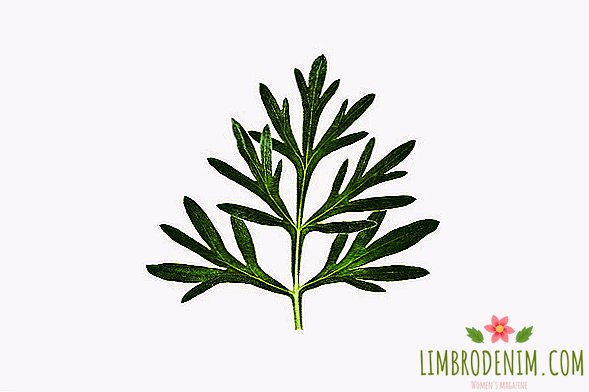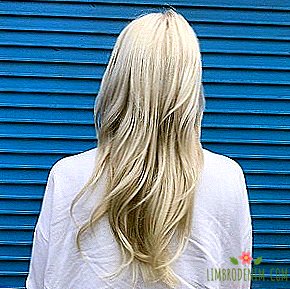Poplar down: How to escape from seasonal allergies
WITH THE COMING OF SPRING IS CONNECTED A MANY PLEASANT: finally it gets warm and the greens are breaking through. But for many of us, the flowering season is hardly a cause for joy — those who are allergic to pollen or pollinosis are waiting for the first flowers with horror. Together with the allergist-immunologist of the Institute of Immunology FMBA Eugenia Nazarova, we understand what allergens are, how pollinosis manifests itself and what can be done to make life easier in this difficult period.

Why do flowers make us suffer?
When it becomes impossible to breathe because of the awakening nature, it seems that life undeservedly punishes us. In fact, this is how the protective mechanisms of the immune system work: the body perceives certain substances - allergens - as a potential threat and produces antibodies (also called immunoglobulins E) that try to destroy this allergen. At the same time, the concentration of histamine in the blood increases, due to which edema and general malaise occur.
An immune reaction to stimuli, or triggers, can occur all year round — for example, when it comes into contact with household dust or animal hair, or during a certain season, when plant pollen appears. Pollinosis is one of the most common diseases in the world. According to WHO, almost every third person on the planet faces it. In Europe, pollen sensitivity is observed in 44% of people, in the USA it is 43%, and in New Zealand - 46%. In 2014, in the UK alone, according to statistics from the AllergyUK charitable organization, 18 million people turned to the doctor with symptoms of pollinosis.
Researchers suggest that allergy has become so widespread, not only because of modern food and unfavorable ecology, but also because of too vigorous hygiene. A genetic predisposition may also play a role: according to some data, the likelihood that children will inherit the hypersensitivity of one of the parents is 30-60%, and if both parents are allergic, then 50-70%. Although it is not yet possible to say with confidence that genes are to blame for everything, in recent years they have conducted many scientific experiments that confirm the hypothesis of kinship continuity. If the allergy did not appear in childhood, it’s too early to rejoice: there is no guarantee that it will not manifest itself at all. Today it has finally become clear that the disease can occur for the first time at any age, even in the elderly.
Maybe it's still a cold?
The symptoms of pollinosis resemble the common cold: the nose hurts, itches, it becomes stuffy, the eyes water, the nose is sore and, of course, I want to sneeze all the time. You can try to distinguish pollinosis from a cold if you pay attention to when all this happens. The common cold is more typical for the autumn-winter period and usually passes in about a week, but allergies can be much more stubborn and manifest during the flowering of various plants. In the spring, tree pollen (birch, alder, hazel) spreads, in June-July - grass (timothy, oatmeal, hedgehogs), and from July to September - weeds (quinoa, wormwood, ambrosia).
Many allergy sufferers are convinced that they react to poplar fluff, but this statement is more fiction than truth. The flakes of fluff are too big to get on the mucous membranes, and he himself is not an allergen: itching or sneezing can occur if the fluff literally tickled your nose. On the other hand, allergy sufferers still have to fear the poplar fluff: it, like a sponge, collects pollen from other plants on itself and spreads it around. In spring and autumn, the cause of allergies can be spores of certain fungi - alternaria, cladosporium, aspergillus. There are cases of sensitivity to two or more allergens, and accurate information about which trigger worked, can only give a special examination.
The examination may include so-called skin tests, when allergens are applied to the skin or injected, and then the reaction is monitored after twenty minutes, five to six hours, and a couple of days. This is a tried and true diagnostic method, to which, however, there are a number of contraindications. There is also a blood test for specific antibodies to individual allergens, including drugs, household and construction.
What to do?
If the season has already begun and the allergy manifested itself, you can use antihistamine tablets, nasal sprays, eye drops; These products are sold without a prescription, but it is better to consult a doctor who will recommend therapy depending on the specific symptoms. True, this treatment option does not give a lasting effect: it allows you to reduce the manifestations of the disease, but does not eliminate it completely.
The means available today are effective and safe: unlike the previous generation of antihistamines, they do not cause drowsiness and practically do not affect everyday life. Such drugs suppress the amount of histamine in the blood, reducing the intensity of the allergic reaction - thus, swelling, itching and congestion disappear. But even they are not perfect: it is necessary to stop taking it, as the level of histamine is restored, and the allergic reaction not only resumes, but can also become stronger. In addition, if in this season the drug was effective, not the fact that it will help the next time. Allergy progresses every year and the intensity of the immune response increases - the effectiveness of antihistamines, respectively, decreases.
If there is a possibility, it is best to literally avoid pollinosis - go to another climate zone for the period of dusting of the plants. For those who are forced to be in an allergic environment, there are also remedies: anti-allergic masks and filters. According to some studies, filters were even more effective in reducing the symptoms of pollinosis than antihistamines. More than half of the experiment participants would like to continue using filters in everyday life. Nevertheless, while scientists are not ready to confidently say that nasal filters really protect against pollinosis better, and some users note that it is difficult to breathe with them. Anyway, if the allergic reaction has already begun, such a remedy is unlikely to help. With a stuffy nose, any mechanical obstruction will only make breathing more difficult and make you feel worse.

Is it possible to cure allergies once and for all?
The most effective method is allergen-specific immunotherapy, which affects the very cause of the disease and reduces sensitivity to triggers. It is carried out before the start of the allergic season: the doctor identifies the main allergen in order to enter it in small doses and observe the reaction. Such a treatment is similar to vaccinations: this is usually subcutaneous injections or the reception of an allergen in the sublingual form (in tablets or drops). The latter is much more convenient and better suited, for example, to children, but some allergens are only available for injections, and then there is no choice.
In Russia, allergy immunotherapy is administered to adults of any age and children from the age of five. Of course, before starting treatment, the doctor will conduct a general examination and collect anamnesis - it may be contraindicated for people with certain diseases of the cardiovascular system or the digestive tract. During pregnancy and breastfeeding immunotherapy is not carried out at all. An allergen in itself does not harm either the mother or the child, but the reaction to it can cause a number of symptoms that cannot be removed with drugs that are allowed during pregnancy. It is easier to wait and make an appointment with an allergist after completing breastfeeding.
Allergen-specific immunotherapy courses conducted for several years. A series of procedures begin before the start of the dusting season, and when it ends, repeat. As a rule, allergen treatment is carried out for three years in a row, and the fourth one is in remission - that is, sensitivity to stimuli is reduced. This means that during the allergic season, a person can safely be on the street without experiencing any discomfort. Sometimes three years of treatment is not enough, and then the course of therapy is carried out additionally in the fourth or even fifth year. Improvement usually occurs after the first course of therapy, but the maximum effect, including resistance, is achieved after a few years. This allows the patient to enjoy life without allergy for three to five years, and then repeat the treatment. Sometimes the remission lasts even ten years, but each case is individual, and it is impossible to predict how long the effect will last.
And if not treated?
Despite the inconvenient and costly need to resume courses of allergen-specific immunotherapy, this method has a significant advantage: it does not allow the disease to progress into more severe and life-threatening forms. The problem with allergies, seasonal or permanent, is that we seldom perceive it as a disease, and therefore we sometimes treat it frivolously. Even if the symptoms of pollinosis are not too disturbing - a slight nasal congestion, itchy eyes - there is a risk that they will increase with time.
Allergy, if not controlled, may be complicated; During the examination, up to 50% of people with allergic rhinitis, doctors diagnose bronchial asthma, for the treatment of which serious interventions are needed: special inhalers and intravenous medication. The question of how justified is the treatment of pollinosis and which way to deal with it is better remains open. In any case, if you are aware of your allergies and have noticed worsening of symptoms, a routine check-up with a specialist and timely therapy will protect you from more dangerous chronic illnesses.
Photo: Maxal Tamor - stock.adobe.com, domnitsky - stock.adobe.com, shishiga - stock.adobe.com





